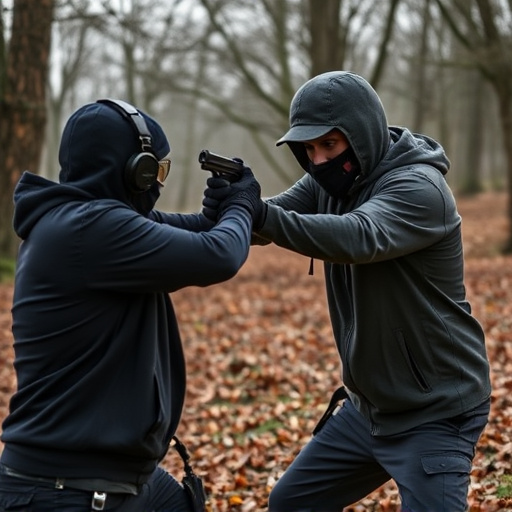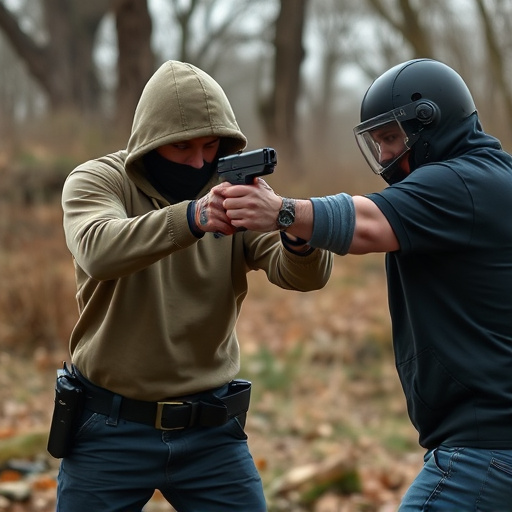Taser vs Stun Gun: Power, Range, Safety & Self-Defense Comparison
Tasers and stun guns, both non-lethal weapons, differ in their approaches to neutralizing attackers……..
Tasers and stun guns, both non-lethal weapons, differ in their approaches to neutralizing attackers. Tasers use electrical impulses to paralyze muscles from a distance of 2-3 meters, while stun guns employ high-voltage pulses to induce pain and disorientation at triple that range. Stun guns are generally more affordable, ideal for close encounters, whereas Tasers offer longer range and precise targeting. When choosing an affordable stun gun for self-defense, understanding these power dynamics is key in meeting personal needs and adhering to local laws.
In today’s world, personal safety is paramount. Understanding the difference between Tasers and stun guns is crucial for those seeking effective self-defense tools. This article guides you through the basics, delving into key distinctions regarding power, range, and safety considerations. We explore why choosing an affordable stun gun might be a smarter option for those looking to protect themselves without breaking the bank. Discover which tool best suits your needs in our comprehensive comparison.
- Understanding Tasers and Stun Guns: Unraveling the Basics
- Key Differences: Power, Range, and Safety Considerations
- Choosing an Affordable Option for Self-Defense: Stun Guns vs. Tasers
Understanding Tasers and Stun Guns: Unraveling the Basics

Tasers and stun guns are both non-lethal weapons designed for self-defense, but they operate on distinct principles. Tasers, officially known as Conductivity Energy Devices (CEDs), use electrical impulses to disrupt muscle control in their target, temporarily incapacitating them. This is achieved through a series of small probes that deliver a powerful electric shock. Stun guns, on the other hand, emit a high-voltage, low-current electrical pulse designed to cause pain and disorientation without fully paralyzing the victim.
While both offer effective personal defense options, especially for situations where an attacker has a significant size or strength advantage, there are key differences. Tasers tend to be more precise, allowing users to target specific areas, while stun guns often provide a broader area of effect. In terms of affordability, stun guns are generally cheaper to acquire than tasers, making them an accessible option for individuals seeking affordable self-defense solutions.
Key Differences: Power, Range, and Safety Considerations

When comparing a Taser and a stun gun, two popular self-defense tools, understanding their key differences is essential. One of the most significant distinctions lies in their power and how they affect a target. Tasers use electrical impulses to disrupt muscle control, causing the person to experience temporary paralysis. This makes Tasers highly effective for immobilizing individuals from a distance. On the other hand, stun guns emit a high-voltage electric charge that delivers a powerful jolt, often resulting in immediate disorientation and loss of balance in the target.
Range is another critical factor. Tasers generally have a shorter range, typically around 2-3 meters, requiring close proximity to be effective. Stun guns, however, can deliver a shock from a farther distance, usually up to 2-3 times further than a Taser, making them more versatile for self-defense in various scenarios, including situations where the user might need to defend themselves at a bit more range. Safety is also a significant consideration; stun guns are generally considered safer for close encounters due to their lower voltage, while Tasers can be more potent and pose risks of muscle strain or injury if not used properly, especially at closer ranges. For those seeking affordable stun guns for self-defense, understanding these differences is vital in making an informed choice based on personal needs and local laws.
Choosing an Affordable Option for Self-Defense: Stun Guns vs. Tasers

When considering affordable options for self-defense, both stun guns and tasers offer effective solutions but cater to slightly different needs. Stun guns are generally more accessible and cost-effective, making them an excellent choice for those seeking a straightforward and budget-friendly self-defense tool. These devices typically use high-voltage electrical pulses to temporarily incapacitate an aggressor, providing users with a non-lethal way to defend themselves in close quarters.
On the other hand, tasers have gained popularity due to their dual probe system, which allows for longer range and more precise targeting. While they might be slightly pricier than stun guns, their advanced technology offers enhanced control and safety features. Tasers are ideal for individuals who prioritize a bit more reach and reliability in their self-defense mechanism, especially in situations where maintaining distance is crucial.
When it comes to self-defense, both tasers and stun guns offer unique advantages, but affordable stun guns often prove more accessible and cost-effective. While understanding the nuances of power, range, and safety is crucial, many individuals seek budget-friendly options that provide a reliable deterrent without breaking the bank. In this context, stun guns emerge as a popular choice for those prioritizing personal safety without the significant investment typically associated with tasers.


